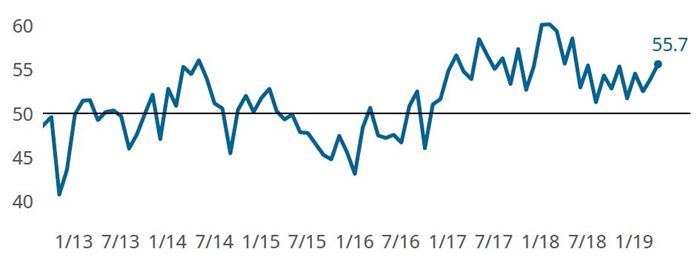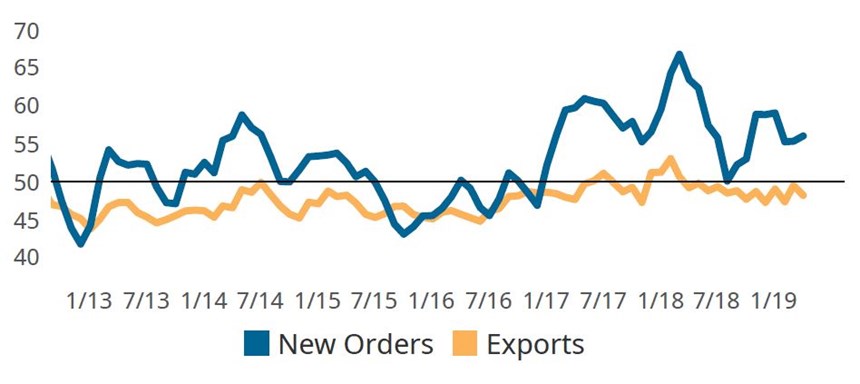Moldmaking Index Nears One-Year High
The Gardner Business Index (GBI): Moldmaking reached its highest level in nearly a year with an April reading of 55.7, a level which it last registered in May 2018. Readings above 50 indicate expanding business activity, while a value of 50 indicates no change and below 50 indicates contracting business activity.
The Gardner Business Index (GBI): Moldmaking reached its highest level in nearly a year with an April reading of 55.7, a level which it last registered in May 2018. Readings above 50 indicate expanding business activity, while a value of 50 indicates no change and below 50 indicates contracting business activity. Compared to April 2018, the Index is unchanged. During 2018’s second quarter, the Index quickly moved lower after reaching all-time highs in the early 2018. Gardner Intelligence’s review of the month’s underlying data reveals that production, new orders and employment lifted the Index higher, and supplier deliveries pulled it slightly lower, followed by backlogs and exports. Only exports registered a contractionary reading for the month.
The April data indicated a continuation of the strong expansion in production, new orders and employment activity initially identified in March. Production, employment and backlogs all registered elevated readings not seen mid-2018. New orders activity accelerated in March and April after its recent nadir in February. Contractionary exports readings during 2019 have hampered greater expansion in total new orders; however, the expansion in total new orders despite weak exports manifests the strength of domestic market.
Related Content
-
Moldmaking Activity Contraction Slows in August
Future business expectations still improving, but more slowly.
-
Moldmaking Activity Returns to Accelerated Contraction
February’s index dropped from the more positive readings seen in January, landing on par with July 2023 and remaining in contraction mode.
-
Contraction in Moldmaking Activity Slowed According to GBI
The moldmaking index almost bounced back to November’s reading but stopped one point shy, as most components slowed or stabilized contraction in December.

.jpg;width=70;height=70;mode=crop)












